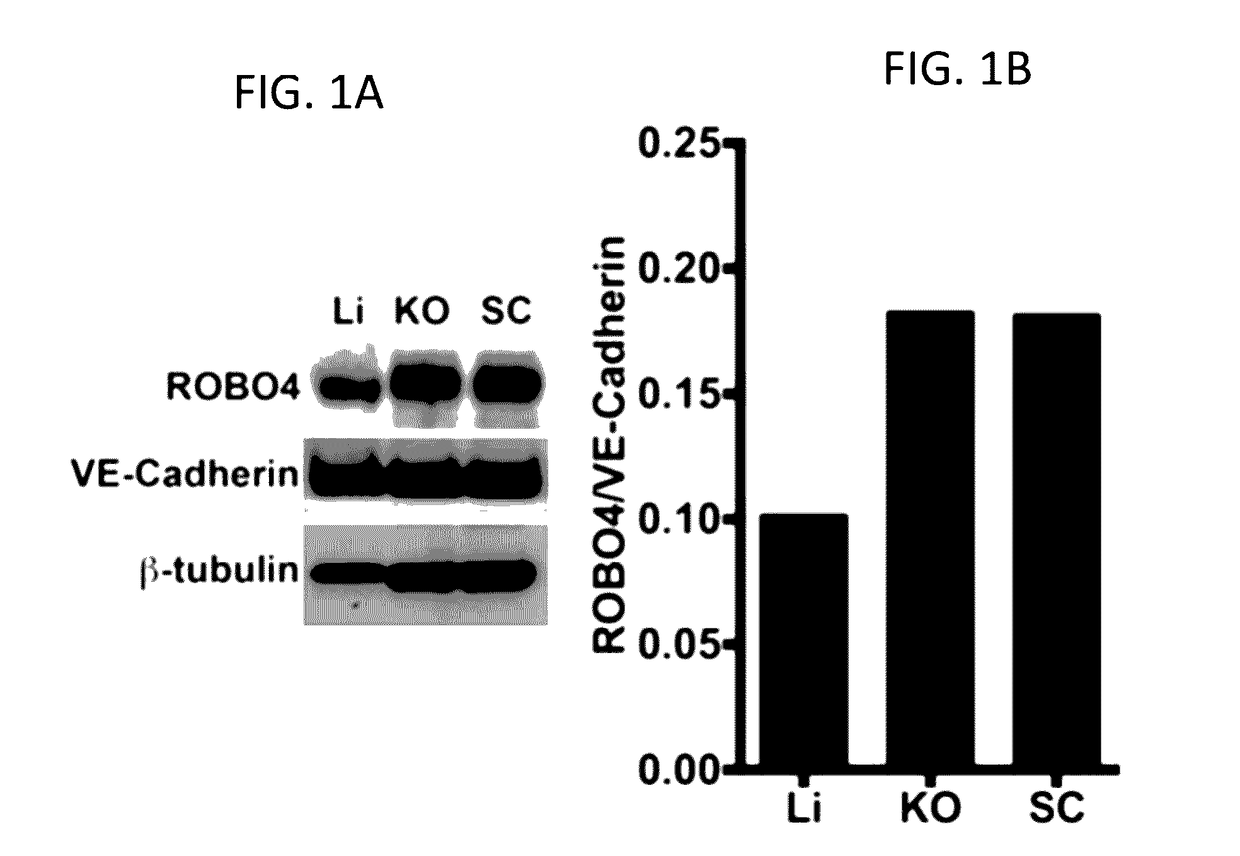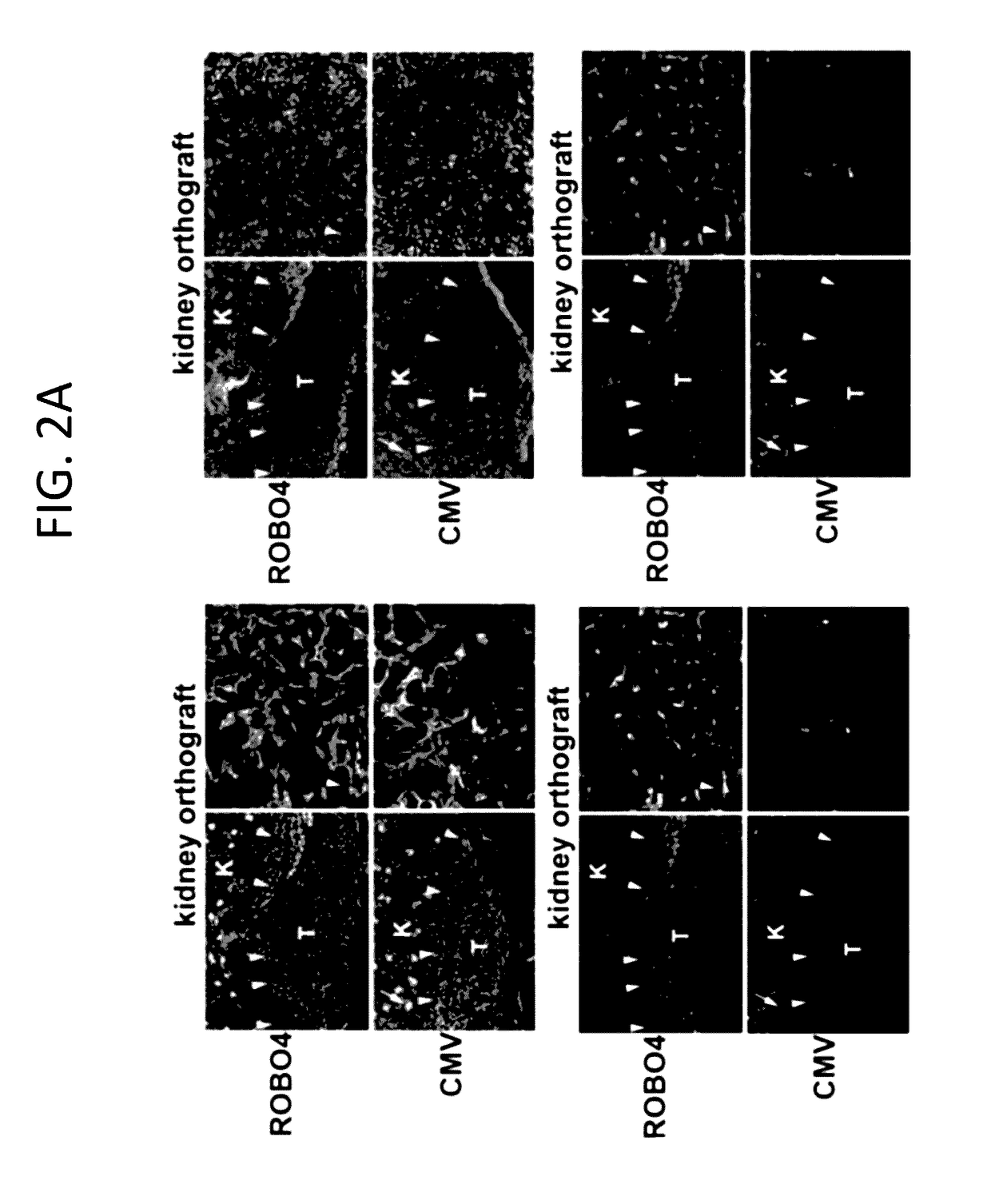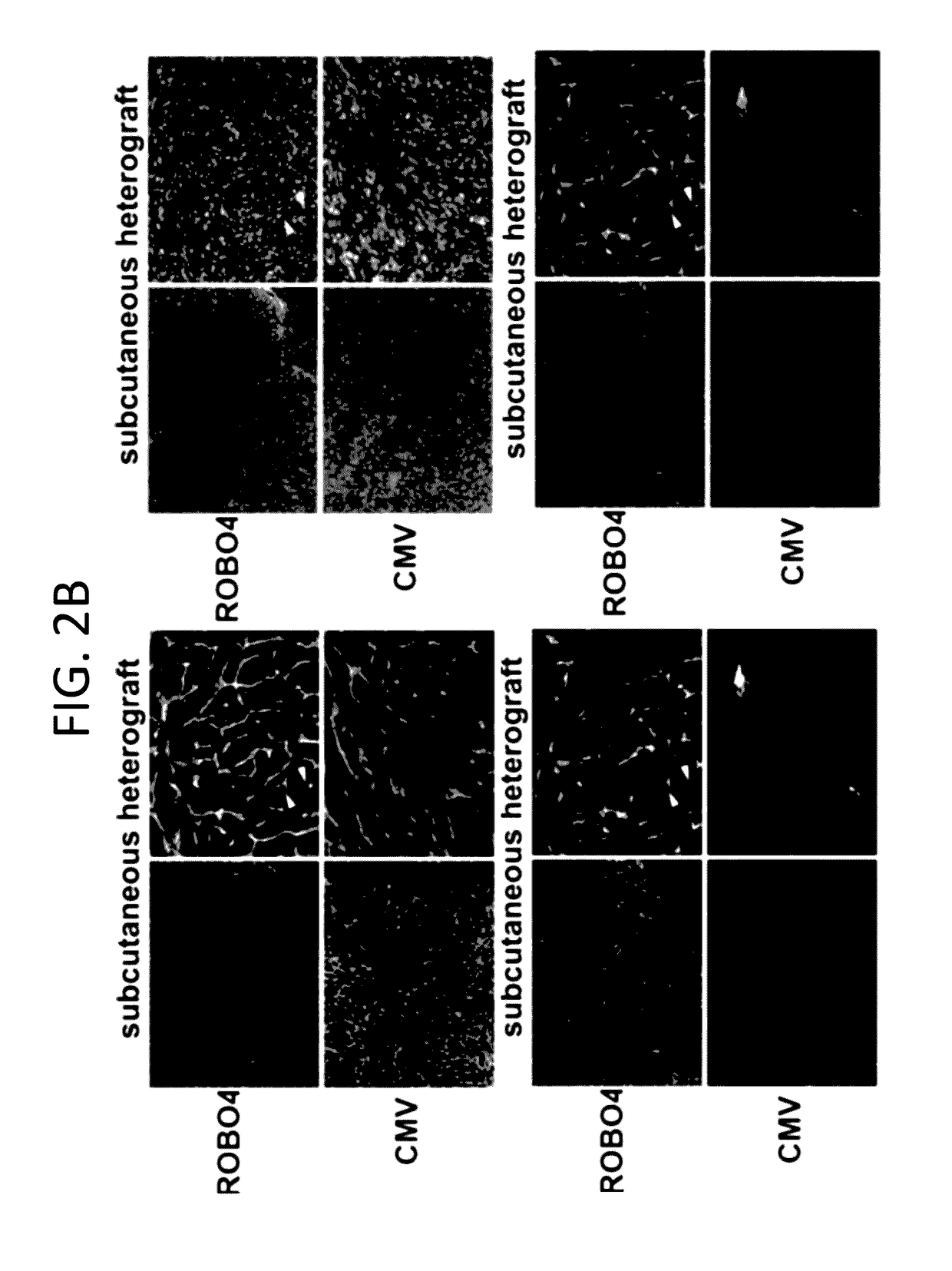Endothelial-targeted Adenoviral Vectors, Methods and Uses Therefor
a technology of adenoviral vectors and endothelial cells, which is applied in the direction of growth factor/regulator receptors, peptides, enzymology, etc., can solve the problems of limited clinical utility, failure to investigate the vascular expression of vectors in an extensive panel of host organs, and challenge prior research, so as to reduce transgene expression, reduce gene expression, and achieve full lung targeting capacity
- Summary
- Abstract
- Description
- Claims
- Application Information
AI Technical Summary
Benefits of technology
Problems solved by technology
Method used
Image
Examples
example 1
[0172]This example illustrates the upregulation of endogenous ROBO4 in renal cancer xenografts and orthotopic tumors.
[0173]To evaluate Ad vectors for tumor EC targeting, a cancer histotype was selected forming hypervascular tumors both in mouse models and in human disease. Renal cell cancer (RCC) is a paradigm clinical hypervascular tumor whose principal therapy is drugs targeting angiogenesis. The human derived 786-O renal carcinoma cell line was selected because these cells possess the molecular features of, and histologically emulate, clinical renal cell cancer in patients (Kondo K et al. 2003: Gordan J D et al. 2008). In addition, the cells form hypervascular xenograft and orthotopic kidney subcapsular tumors (FIG. 3). It was hypothesized that the vascular ECs in 786-O tumors would be activated (taking into consideration FIG. 7). Warfarin liver detargeting enhanced the multiplicity of tumor endothelial cell reporter gene expression in both tumor locales. (FIG. 7) One candidate g...
example 2
[0174]This example illustrates that an Ad5ROBO4 vector transcriptionally targets tumor endothelial cells.
[0175]To transcriptionally target an Ad vector to RCC tumor vasculature the 3 kb enhancer promoter fragment of human ROBO4 previously validated for endothelial expression in single copy and endogenous locus transgenic knock-in mice (Okada Y et al 2007) was used. ECs are known to express trace levels of the Coxsackie and adenovirus receptor (CAR) (Reynolds F N et al 2000; Preuss M A et al. 2008). Immunodeficient composite mice were created containing a human CAR (hCAR) transgene and Rag2 gene deletion (Shinkai Y et al. 1992; Tallone T et al. 2001). Reporter gene localization within tumor ECs was tested (FIG. 3). There was a dichotomy in Ad5ROBO4 versus Ad5CMV vector expression pattern in both kidney orthotopic (KO) and subcutaneous (SC) xenograft tumors of mice intravenously injected with 1.5×1011 viral particles (vp) (FIG. 2). Intense EGFP expression is also detected in endotheli...
example 3
[0176]This example illustrates that an Ad5ROBO4 vector transcriptionally targets metastatic tumor endothelial cells.
[0177]During tissue immunofluorescence analysis intra-ovarian and peritoneal metastases were detected in an Ad5ROBO4 injected mouse (1.5×1011 vp) hearing an orthotopic tumor (FIG. 3). Nearly all of the microvessels within the infraovarian and peritoneal metastases expressed EGFP. There was almost no expression within stromal ECs within the metastasis-bearing ovary except for perifollicular microvessels (FIG. 3). Intra-ovarian “Krukenberg” renal carcinoma metastases in hCAR:Rag2KO / KO mice injected with 1.5×1011 vp. FIGS. 3A-3C, arrowheads, from subcapsular 786-O orthografts demonstrate extensive and intense microvessel EGFP expression. Expression was not detectable in ECs within the fallopian tube abutting the peritoneal metastasis (FIG. 3).
PUM
| Property | Measurement | Unit |
|---|---|---|
| pH | aaaaa | aaaaa |
| temperature | aaaaa | aaaaa |
| diameter | aaaaa | aaaaa |
Abstract
Description
Claims
Application Information
 Login to View More
Login to View More - R&D
- Intellectual Property
- Life Sciences
- Materials
- Tech Scout
- Unparalleled Data Quality
- Higher Quality Content
- 60% Fewer Hallucinations
Browse by: Latest US Patents, China's latest patents, Technical Efficacy Thesaurus, Application Domain, Technology Topic, Popular Technical Reports.
© 2025 PatSnap. All rights reserved.Legal|Privacy policy|Modern Slavery Act Transparency Statement|Sitemap|About US| Contact US: help@patsnap.com



